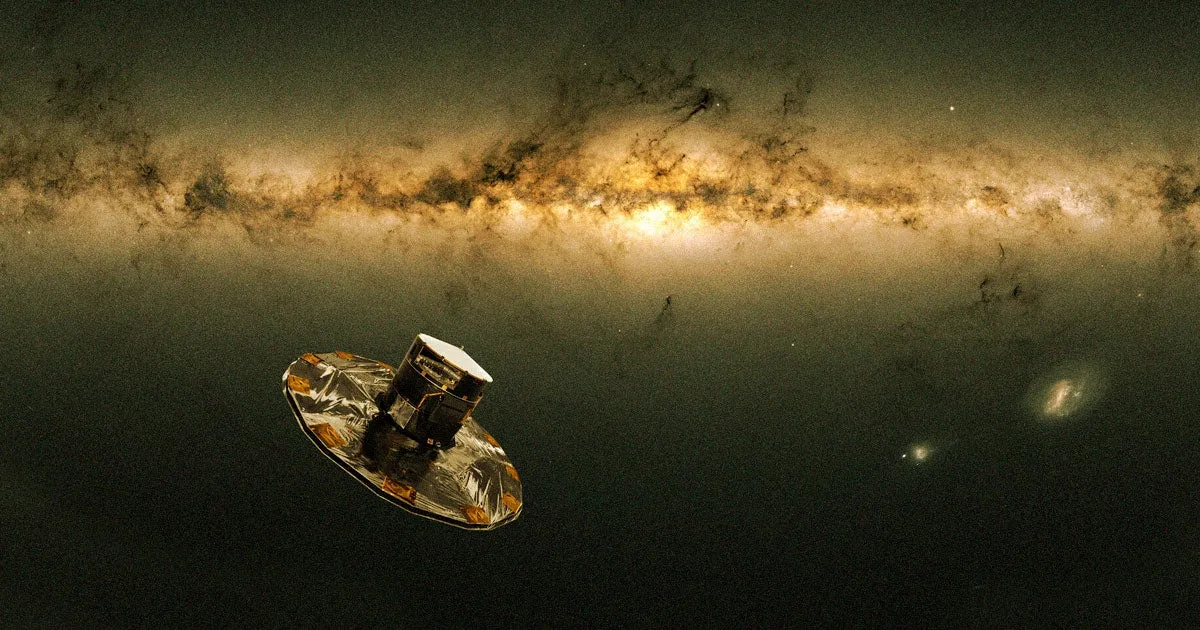
As the European Space Agency (ESA) prepared to power down its Gaia spacecraft, the mission faced unexpected obstacles. This innovative spacecraft has been instrumental in creating a highly detailed three-dimensional map of over a billion stars within the Milky Way and beyond. Surprisingly, the decommissioning process proved to be more complex than anticipated, as the spacecraft exhibited unusual resistance to being switched off.
According to Tiago Nogueira, Gaia's spacecraft operator, the task of shutting down a spacecraft at the end of its mission may seem straightforward. However, he emphasized that spacecraft are inherently resistant to being turned off. This resilience is a result of Gaia's advanced design, which allows it to withstand various hostile conditions, including radiation storms, micrometeorite impacts, and potential communication failures with Earth.
Gaia was built with multiple redundant systems, ensuring that it could reboot and continue operations even in the face of disruptions. This robust design presented a unique challenge during its decommissioning phase. The ESA team had to develop a meticulous strategy to systematically dismantle and deactivate these layers of redundancy. The goal was to ensure that Gaia would not reactivate in the future, especially if its solar panels were to receive sunlight.
Launched in 2013, Gaia was tasked with creating the largest space catalog in history. After more than a decade of successful operations, it reached its predetermined retirement age earlier this month. In its final maneuvers last week, Gaia’s thrusters repositioned it away from Lagrange Point 2, located approximately one million miles from Earth, where the gravitational forces of the Sun and Earth create a stable orbital environment.
Instead of remaining at Lagrange Point 2, Gaia has now moved into a stable retirement orbit around the Sun. This precaution ensures that the spacecraft will not come near Earth for at least the next century, as confirmed by the ESA. As part of the meticulous retirement process, scientists deactivated Gaia’s instruments and subsystems one at a time.
To prevent any chance of reactivation, the team took the additional step of deliberately corrupting Gaia’s onboard software. Julia Fortuno, a spacecraft operations engineer, explained that this measure was critical to guarantee that once the spacecraft was switched off, it would remain inactive indefinitely.
Throughout its operational lifetime, Gaia has provided astronomers with an invaluable resource, mapping stars, moons, and exoplanets. This extensive data collection will significantly enhance scientific understanding of the Solar System's position within the galactic disc. Notably, previous observations from Gaia have revealed that our Solar System is moving toward the galactic center at an accelerating rate.
Reflecting on the end of the mission, Fortuno expressed mixed emotions, saying, “I have mixed feelings between the excitement for these important end-of-life operations and the sadness of saying goodbye to a spacecraft I have worked on for more than five years. I am very happy to have been part of this incredible mission.”
As the ESA looks forward, the wealth of data provided by Gaia will pave the way for future missions, including the upcoming Plato mission, which aims to explore exoplanets further. The legacy of Gaia will undoubtedly continue to influence astronomical research and our understanding of the universe.
For more information on Gaia and its groundbreaking discoveries, check out our article: Europe's Gaia Telescope Spots Hundreds of Hidden, Lurking Moons.